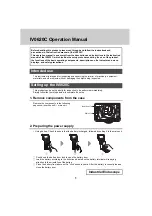
Fig. 3-26. Location of TP1101 on Crt Readout.
b. Apply a 5 kHz, 0 to + 4 V signal, from the sine-wave
generator, through a bnc-to-pin-jack adapter, to the Ext Vid
eo input (pin 2) and Video Select (pin 1) of the ACCESSO
RIES jack (see Fig. 3-25).
c. Adjust Vert Gain, R1066 (Fig. 3-23), for a full screen
display (0 to + 4 V). Remove the 5 kHz signal from pin 2
of
the ACCESSORIES jack.
Calibration—492/492P Service Vol. 1 (SN B030000 & up)
Adjustment Procedure
d. Set TIME/DIV to MNL, and Vertical Display to
2 dB/DIV.
e. Connect a digital voltmeter (DVM) to TP1061 (Fig.
3-23) and adjust MANUAL SCAN for 0.0 V at TP1061. Ad
just horizontal Position control to center MANUAL SCAN
dot,
f. Adjust MANUAL SCAN for a reading of + 5 V at
TP1061. Now adjust Horiz Gain, R1055 (Fig. 3-23), to posi
tion the crt beam to the right graticule edge (
1 0
th graticule
line).
g. Adjust MANUAL SCAN so crt beam moves to the left
edge of the graticule and check that the voltage at TP1061
is now approximately —5.0 V.
h. Turn the POWER off and disconnect the DVM. Re
move and install the Deflection Amplifier board on an
extender.
i. Change the test oscilloscope to Ext Trigger. Apply the
Readout Off signal at TP1011 (Fig. 3-26), in the upper left
corner of the crt readout board, to the test oscilloscope Ext
Trigger input. Adjust the controls for a triggered sweep.
Turn the 492/492P sweep off by activating SINGLE
SWEEP, deactivate Digital Storage and ensure READOUT
is on.
j. Connect the test oscilloscope probe to the collectors
of Q1031 and Q1024. Adjust C5021 (Fig. 3-27) for the best
frequency response (no overshoot or rolloff).
Q1024 Q1031 Q1043
Q1072
Q1095
Fig. 3 •27. Test points and adjustments on the Deflection Amplifier board for gain and frequency response calibration.
REV FEB 1982
3-47
















































